#chandragupta maurya
Explore tagged Tumblr posts
Text
Idea:
Menelaus and Chandragupta talking obsessively about their Helens
#greek mythology#the iliad#iliad#menelaus#greek epic#chandragupta#chandragupta maurya#helen of sparta#helen of troy#helena#helena of seleucus#indian history#ancient history#greek myths#ancient greek mythology#tagamemnon#desiblr#desi tumblr#desi tag#desiposting
16 notes
·
View notes
Text

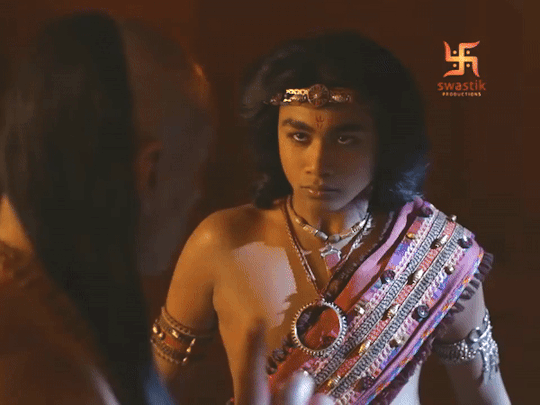


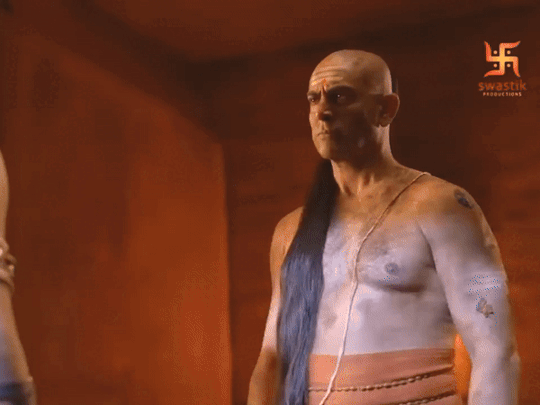
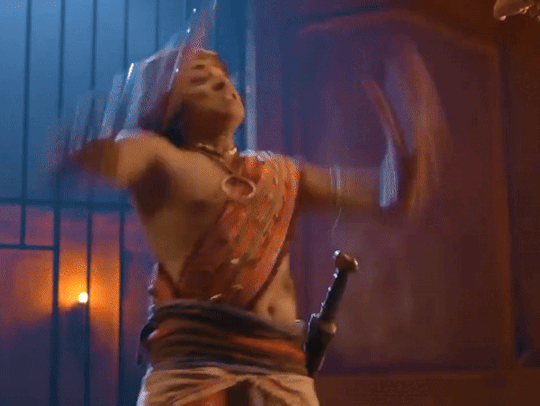
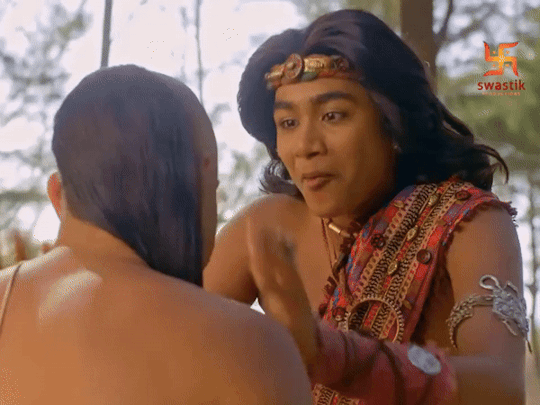

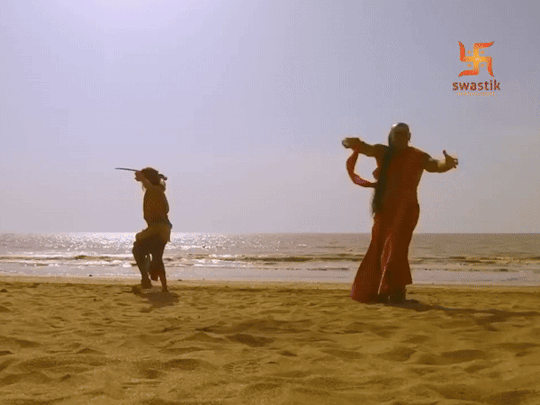


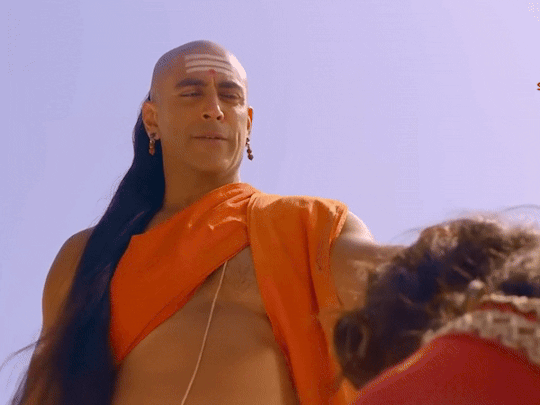
Name a more iconic duo... I'll wait
#yes this is a chandragupta maurya post#you have no idea how much i love these two#this show is my roman empire#there's only one person in this fandom and that is me#chandragupta maurya#tarun khanna#kartikey malviya#indian tumblr#desiblr#desi tumblr#gifset
12 notes
·
View notes
Text
The Yaudheya - who, what? They were an ancient military people based in the Eastern Regions of the Sapta Sindhu - a copper coin of theirs here depicting the Hindu War God Kartikeya (who is also a war god under other names via Buddhism spreading his story Eastward most commonly as Skanda, and in China, as Wei Tuo -- Skanda serves as a celestial guardian role here).


The word Yaudheya comes from Brahmi script (a script you'll see two iterations of/nods to in Tales of Tremaine by name).
Their name comes from the word Yodha - which means warrior/s. And this is backed up by their resistance of invasions by the Kushan Empire, and the Indo-Scythians. The Yaudheya would eventually claim dominion over all the Kuru Kingdoms held and then they themselves would become later absorbed into the Maurya Empire by Chandragupta Maurya. Eventually, the Indo Greek Kingdom Yavana would capture a majority of this empire, but fail to subdue to Yaudheya, who would successfully triumph until eventually losing to to the Indo Scythian Rudradaman I.
But the Yaudheya left an impression on the ruler that led to the inscription of a Sanskrit in prose (not poetry) honoring them as proud heroes - it is known as the Junagadh rock inscription of Rudradaman - dated at 150 CE (common era)
#Yaudheya#ancient military#Sapta Sindhu#Kartikeya#Buddhism#Skanda#Wei Tuo#Brahmi#Tales of Tremaine#Yodha#Kushan Empire#Kuru Kingdoms#Maurya Empire#Chandragupta Maurya#Yavana#Sanskrit#Rudradaman#ancient history#little known history#who and what#learn something new#this is interesting#ancient people#ancient world#world history#southeast asia#Asian history#Indo Greek#indo european
2 notes
·
View notes
Text
बिन्दुसार ने चाणक्य को क्यों निकाला : मौर्यवंश का दूसरा एपीसोड
KKN लाइव के इस विशेष सेगमेंट में, कौशलेन्द्र झा मौर्यवंश के दूसरे शासक बिन्दुसार की चर्चा कर रहे हैं। बिन्दुसार, चंद्रगुप्त मौर्य के पुत्र थे और उन्होंने 29 वर्षों तक मगध पर शासन किया। इस एपिसोड में बिन्दुसार के शासनकाल, उनके पिता चंद्रगुप्त और आचार्य चाणक्य के साथ उनके संबंधों पर विशेष ध्यान दिया गया है। यह वीडियो उन विवादों को भी उजागर करता है, जिनकी वजह से आचार्य चाणक्य ने मौर्य दरबार छोड़…
0 notes
Text
how well our textbooks have convinced us that Asoka was indeed great.
he spent his early life establishing autocracy through violence. but then, our books tell us that he changed after the War of Kalinga and started spreading peace and the notions of Buddhism. he started sending messengers to popularise Buddhism amongst other states.
but isn't emphasising on one particular religion and trying to make everyone follow it, a form of autocracy too?
so, didn't Ashoka start with violent autocracy and end with peaceful autocracy, trying to be powerful all through?

source: india's ancient past, rs sharma
#ashoka#history#ashoka the great#india#indian history#buddhism#king#ruler#mauryas#chandragupta#chanakya#Empire
1 note
·
View note
Text
Maurya Empire: The most powerful civilization to come out of India
Since the beginning of time, the world has witnessed a significant number of formidable empires. Regrettably, not all of them have received the equal attention they deserve in our historical records. We all know about the Roman Empire, the Achaemenid Empire, the Han Dynasty, the Ottoman Empire, and many others. But there are also some mighty empires that merit serious consideration for their…

View On WordPress
1 note
·
View note
Photo

Chandragupta Maurya
Chandragupta Maurya (c. 321 - c. 297 BCE), known as Sandrakottos (or Sandrokottos) to the Greeks, was the founder of the Maurya Dynasty (4th-2nd century BCE) and is credited with the setting up of the first (nearly) pan-Indian empire. Aided by his mentor and later minister Chanakya or Kautilya (c. 4th century BCE), he set up a vast centralized empire, details of whose functioning, society, military, and economy are well preserved in Kautilya's Arthashastra.
Chandragupta's Period: Political Setting
India around the 4th century BCE was divided into numerous kingdoms and republics. The foremost among them was the Magadha Kingdom in eastern India, whose rulers beginning with King Bimbisara (543-492 BCE) had embarked on a quest for empire-building. Magadha's boundaries had thus been much extended over time and contained a good part of central, eastern, and north-eastern India. Alexander the Great (356-323 BCE) invaded India in 326 BCE, and in consequence, much of north-western India was thrown into turmoil and political chaos.
The Magadha ruler during these times was Dhanananda (329-322/321 BCE) of the Nanda Dynasty. He possessed a vast treasure and an army numbering 20,000 cavalry, 200,000 infantry, 2,000 chariots, and 3,000 elephants, according to the Roman historian Curtius (c. 1st century CE). Known to the Greeks as Xandrames or Agrammes, the knowledge of his Magadhan might had also added to the despair of the already war-weary Macedonian troops on India's north-west, forcing them, among other reasons, not to press further into India.
Continue reading...
13 notes
·
View notes
Text
Ancient India and China - Vocabulary
Vedas -- a collection of hymns, chants, ritual instruction, and other religious teachings
Brahman -- a single spiritual power beyond the gods and existing in all things
Moksha -- union with Brahman
Karma -- action and result
Dharma -- personal religious and moral duties
Ahimsa -- nonviolence to all people and things
Siddhartha Gautama -- a Hindu prince -- seeked causes of human suffering
Eightfold Path -- right aspirations -- directs people in achieving moral life goals and enlightenment
Nirvana -- union with the universe
Chandragupta Maurya -- founded the first Indian empire
Asoka -- Chandragupta's grandson
Dowry -- payment to the bridegroom
Shang -- China's first dynasty
Clans -- groups of families -- share a common ancestor
Mandate of Heaven -- divine right to rule
Dynastic Circle -- rise and fall of dynasties
Feudalism -- where lords govern their own land but owed military support to a leader
Zhou Dynasty -- dynasty that established feudalism
Philosophy -- system of ideas
Confucius -- philosopher -- concerned with social order and good government
Laozi -- philosopher -- founded Daoism
Shi Huangdi -- "first emperor"
Qin Government -- Shi Huangdi's government
Hanfeizi -- philosopher -- inspired legalism
Expansionism -- policy of increasing territory
.
Patreon
#studyblr#notes#history#historyblr#world history#world history notes#ancient india#ancient china#philosophy#history of philosophy#world history vocab#history vocab#history vocabulary#vocab list#vocabulary list#historical governments#civilization#hanfeizi#shi huangdi#confucius#laozi#zhou dynasty#shang#dynastic circle
10 notes
·
View notes
Text
THE VISHAKANYA // ASSASSINS
“They were young women reportedly used as assassins, often against powerful enemies, during the times of Ancient India. Their blood and bodily fluids were purportedly poisonous to other humans, as was mentioned in the ancient Indian treatise on statecraft, Arthashastra, written by Chanakya, an adviser and a prime minister to the first Maurya Emperor Chandragupta (c. 340–293 BCE).”
8 notes
·
View notes
Text

Chandragupta Maurya, the founder of the Maurya Empire in ancient India, is said to have had a group of female bodyguards known as the "Virangana" or "brave women." It's believed that he chose female warriors as bodyguards because he considered them to be loyal, skilled in combat, and less likely to be influenced by political agendas or power struggles within his court. Additionally, having female bodyguards may have also served a symbolic or propaganda purpose, showcasing the strength and capability of women in his empire.
12 notes
·
View notes
Text
Alcibiades and Socrates remind me of Chandragupta Maurya and Chanakya tbh-
6 notes
·
View notes
Text
Nine people I'd like to know better
Last song: Ghungroo by Arijit Singh
Favorite color: Dark blue
Currently watching: Chandragupta Maurya
Spicy/savory/sweet: Savory
Relationship status: Single
Current obsession: learning Hindi (also Starplus Mahabharat still lives rent free in my brain)
tagged by: @hindisoup 😚
tagging: @pixlerelish, @artcinemas, @neembu, @mothhashira, @selfshipper-alex, @chaanv, @ihatesnitches, @glittahgurl, @satansvoluptuousthighs
31 notes
·
View notes
Text
i didnt want to end my day by finding chandragupta maurya smutfics but okay
14 notes
·
View notes
Text
Enough of this vanilla flavor, beige, milk sodden, I'll have a soup and sandwich please fixation on medieval Europe. I'm going to start posting Chandragupta Maurya content. White people have no culture outside looking at saints being barbecued and going oooh I wish that were me, or this is just like Will and Hannibal, etc
8 notes
·
View notes
Photo

Chandragupta Maurya
Chandragupta Maurya (c. 321-c. 297 av. J.-C.), connu sous le nom de Sandrakottos (ou Sandrokottos) par les Grecs, fut le fondateur de la dynastie Maurya (IVe-IIe siècle av. J.-C.) et on lui attribue la création du premier empire pan-indien (ou presque). Avec l'aide de son mentor et futur ministre Chanakya ou Kautilya (vers le 4e siècle av. J.-C.), il mit en place un vaste empire centralisé, dont les détails du fonctionnement, de la société, de l'armée et de l'économie sont bien conservés dans l'Arthashastra de Kautilya.
Lire la suite...
2 notes
·
View notes
Text
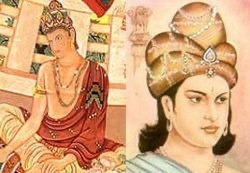
Ashoka the Great: The Transformative Journey from Conqueror to Compassionate Buddhist King
Introduction:
Ashoka, also known as Ashoka the Great, stands as a pivotal figure in Indian history, renowned for his transformation from a ruthless conqueror to a compassionate Buddhist king. Ruling from approximately 268 to 232 B.C.E., Ashoka's reign marked a significant era in the Indian Maurya dynasty, characterized by the unification of India and a profound shift towards governance guided by Buddhist principles.
Early Life and Conquests:
Ashoka, the grandson of Chandragupta and son of Bindusara, initially ascended the throne as a tyrant. His rise to power was marked by the brutal execution of his ninety-nine half brothers. In 259 B.C.E., he undertook a military campaign that would later be a turning point in his life – the conquest of Kalinga. The scale of bloodshed and suffering in Kalinga deeply affected Ashoka, prompting him to reevaluate his approach to governance and life.
Conversion to Buddhism:
Two years after the Kalinga campaign, Ashoka experienced a profound change of heart. He embraced Buddhism, finding solace in its teachings of compassion, non-violence, and right conduct. This conversion marked a crucial shift in Ashoka's reign, transforming him from a ruthless conqueror into a ruler governed by Buddhist ideals.
Establishing "Conquest by Dharma":
Having renounced conquest by force, Ashoka adopted the principle of "conquest by Dharma" – the principles of right life and righteous rule. This approach aimed at establishing a peaceful and just society guided by ethical and moral values. It signified a departure from the militaristic policies of his early rule and a commitment to compassionate governance.
Public Works and Welfare Policies:
One of the hallmarks of Ashoka's reign was his commitment to public welfare. He initiated a series of public works projects, including the construction of hospitals for both humans and animals. Along major trade routes, he planted trees, dug wells, and built resthouses, contributing to the well-being of the populace. Every five years, officials were dispatched to outlying areas to assess the conditions of the people, reflecting Ashoka's dedication to the welfare of his subjects.
Spread of Buddhism:
Ashoka's devotion to Buddhism extended beyond his own borders. He sent emissaries and missionaries to various parts of Asia, including southern India, Kashmir, Gandhara, Sri Lanka, as well as distant lands like Syria, Egypt, and Macedonia. Notably, he sent his son Mahendra and daughter Sanghamitta as missionaries to Sri Lanka, playing a crucial role in spreading Buddhism to the island.
Religious Tolerance:
Despite his deep commitment to Buddhism, Ashoka did not enforce it as the state religion. Instead, he championed religious tolerance, safeguarding the freedom of worship for Jains, Brahmans, Ajivikas, and other religious communities. This inclusive approach to governance contributed to a harmonious coexistence of diverse religious traditions within his empire.
The Third Buddhist Council:
Under Ashoka's patronage, the Third Buddhist Council was convened at the Mauryan capital, Pataliputra, for the compilation of the Buddha's teachings. This assembly solidified Ashoka's commitment to Buddhism and contributed to the preservation and dissemination of Buddhist scriptures.
Legacy:
Ashoka's achievements and philosophical views are not only documented in Buddhist scriptures but also in the numerous edicts inscribed on rock surfaces and pillars discovered throughout his empire. His legacy endures as a testament to the transformative power of introspection, compassion, and a commitment to ethical governance.
Conclusion:
The life of Ashoka exemplifies a remarkable journey of personal transformation and enlightenment. From a warrior king driven by conquest to a compassionate ruler guided by Buddhist principles, Ashoka's legacy extends far beyond his military victories. His reign represents a turning point in Indian history, highlighting the potential for profound change and compassionate governance even in the most powerful of leaders.
2 notes
·
View notes